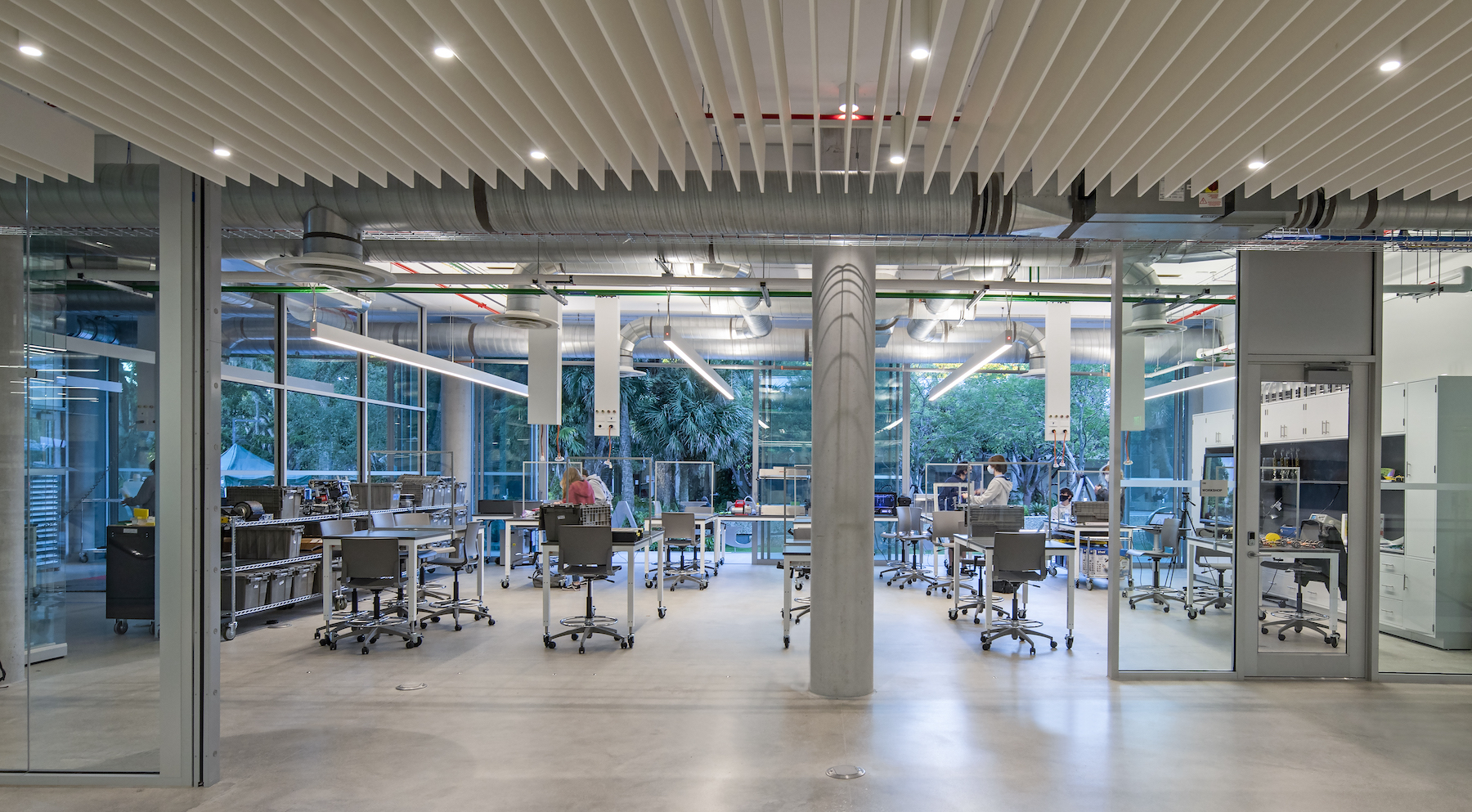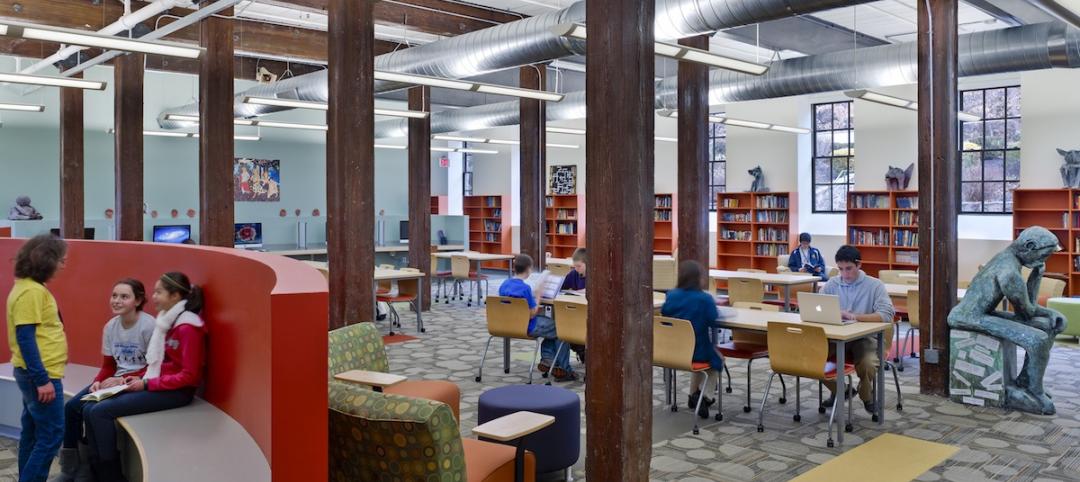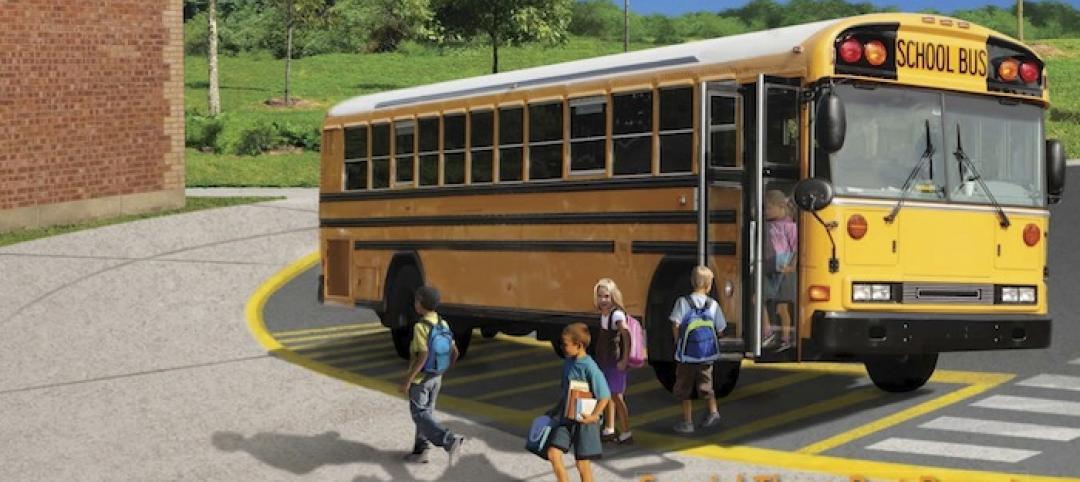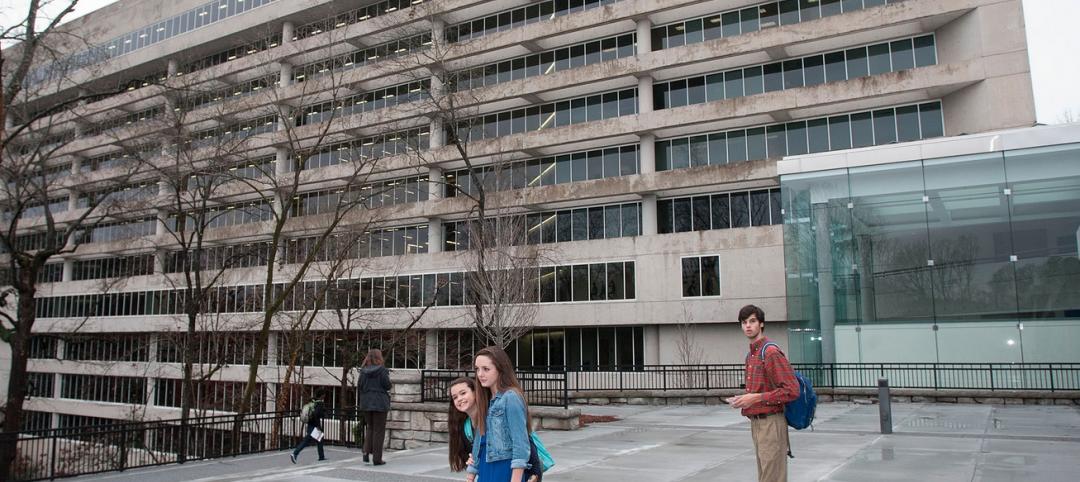When the three-story 45,000-sf Constance and Miguel Fernandez STEM Center for Science and Math opened last September at the entrance of the historic Ransom Everglades School campus in Coconut Grove, Fla., it created a new quad with an outdoor theater and classrooms, art exhibition space, and an outdoor student green. But one thing the new building didn’t have was private offices.
Its designer, Perkins & Will, has seen shared meeting spaces replacing private faculty offices in several of its recent education projects. “This isn’t a trend; it’s here to stay,” says Pat Bosch, Principal and Design Director in P&W’s Miami studio. “We’re seeing it in public schools, too, around the country.
OLD DESIGN IDEAS MADE NEW BY CIRCUMSTANCES
Since the advent of STEM- and STEAM-focused curricula several years ago, schools have been taking their cues from the office and research sectors in terms of rethinking their spaces for collaboration, “with more collision points,” says Bosch.
P&W has a long history of advocating for outdoor learning spaces, and its clients of late are listening to pitches whose angles are about safety and wellness. The shift away from private faculty offices, however, still leaves room for one-on-one learning and communication. P&W’s kit-of-parts approach can include quieter rooms that Bosch believes are less intimidating to students than a teacher’s or principal’s office. “This actually enhances the bespoke educational environment,” says Bosch.
UTILIZING ‘IN-BETWEEN’ SPACES
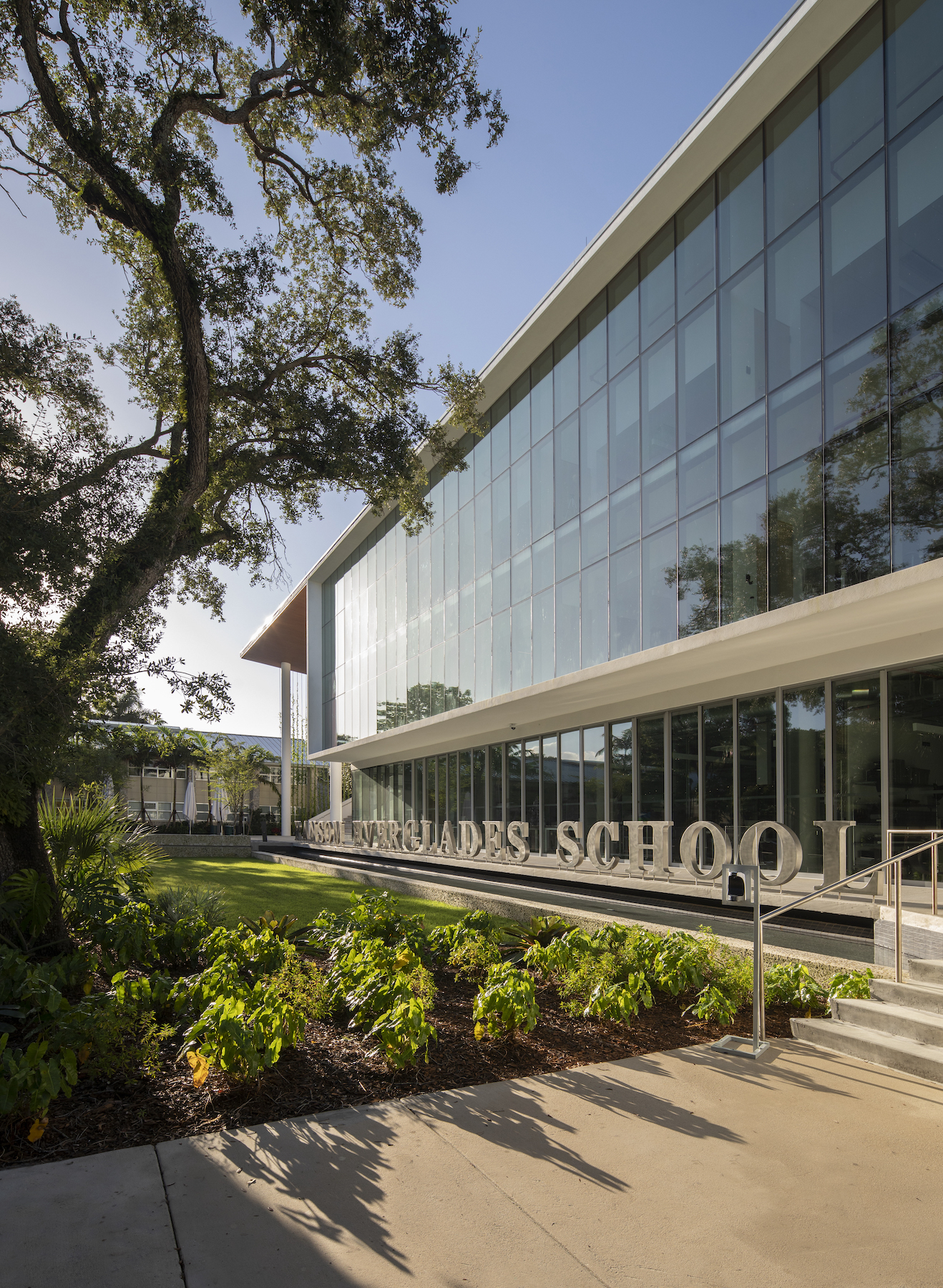
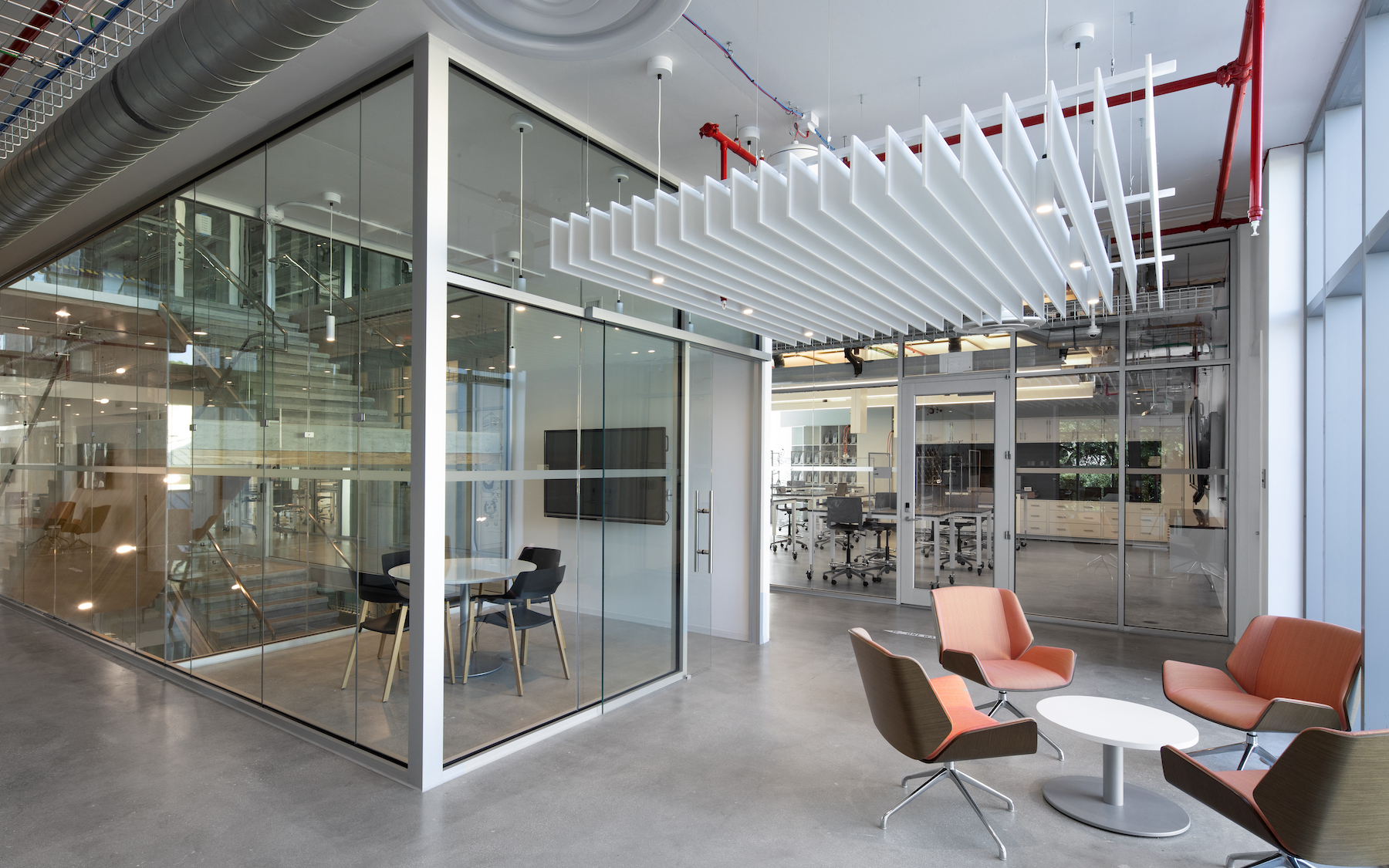
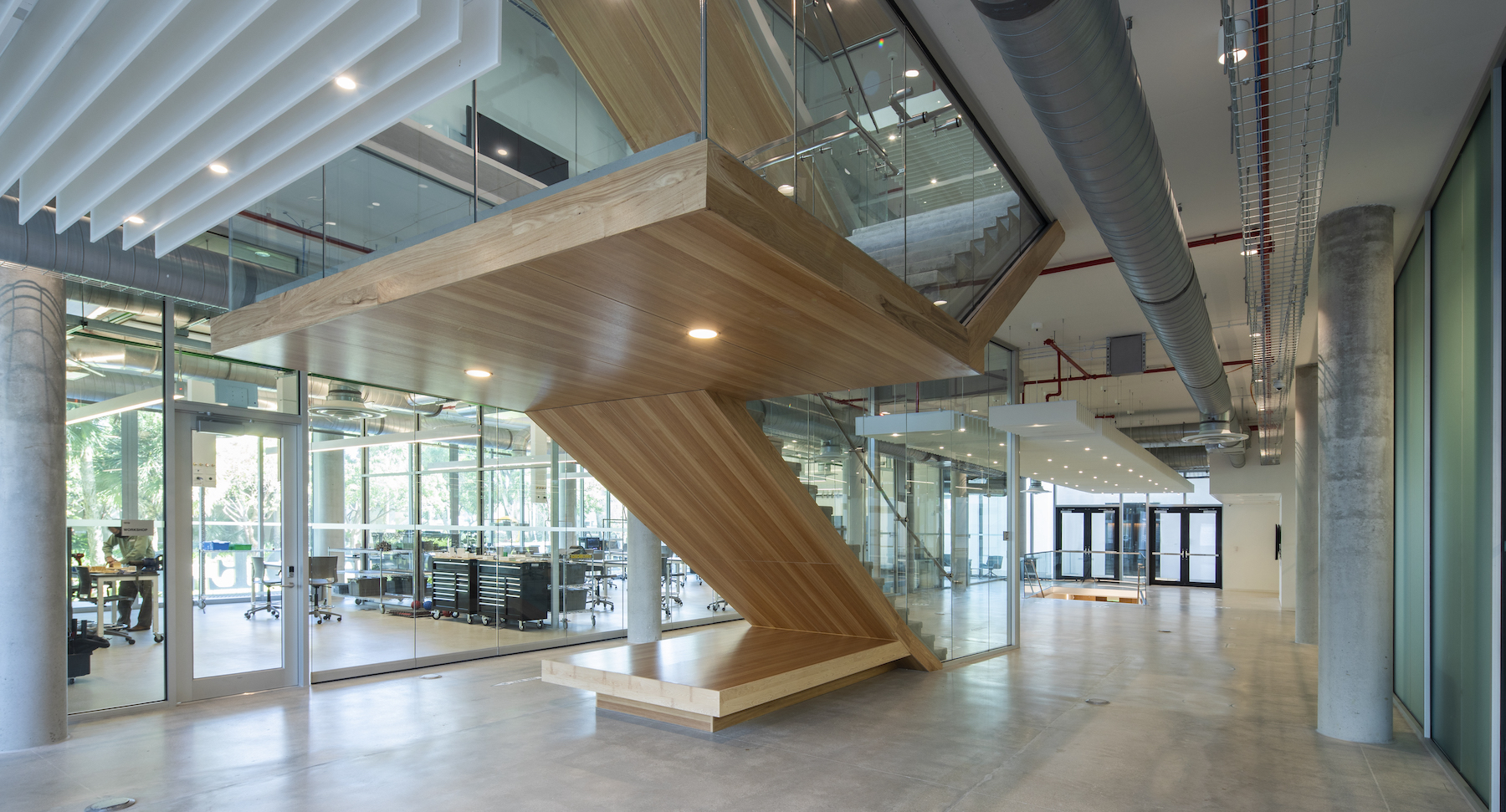
The STEM center at Ransom Everglades School is the result of a design pivot during the COVID-19 pandemic. Essentially a big glass box, Its classrooms and labs are supported by more informal tech-enhanced “in-between” spaces where students and faculty can interact. An aquatics lab functions as a water feature at the front of the building, framed by the exterior student commons and an incubator that was designed to be the center for faculty, administrators, students, and visitors to exchange ideas.
Build by Shawmut Design & Construction, the STEM Center features 10 flexible classrooms with movable walls and furniture, as well as laboratories for earth sciences, biology, chemistry, and physics that integrate with fabrication and maker labs. Utilizing smart-building design throughout, the facility has wide staircases, tech-enabled educational spaces, an outdoor rooftop lab, multi-purpose conference room, and a reconfigurable 200-person auditorium.
Bosch adds that the design also ushered in better circulation for the entire school. “The pandemic propelled this, and now we have a proof of theory.”
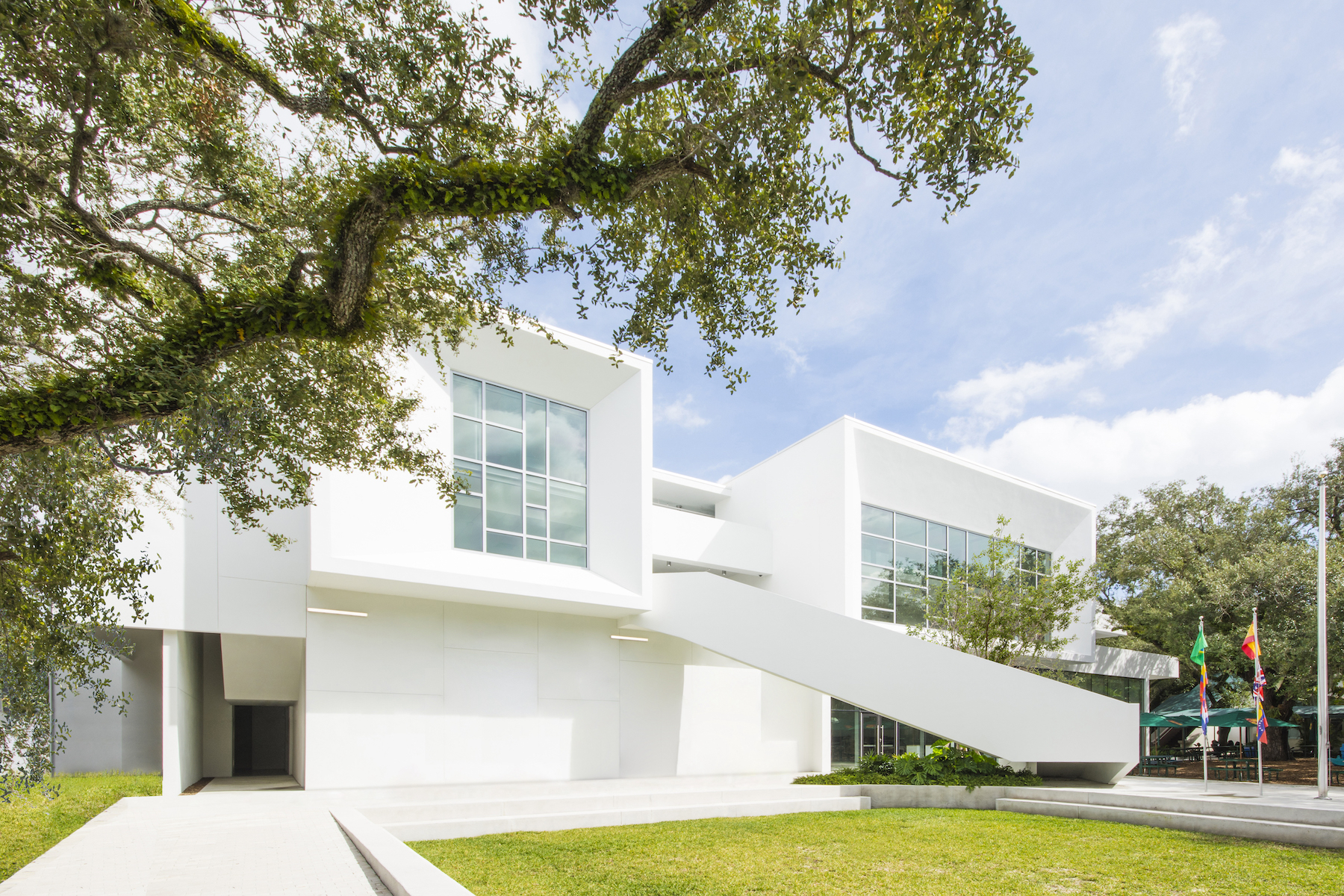
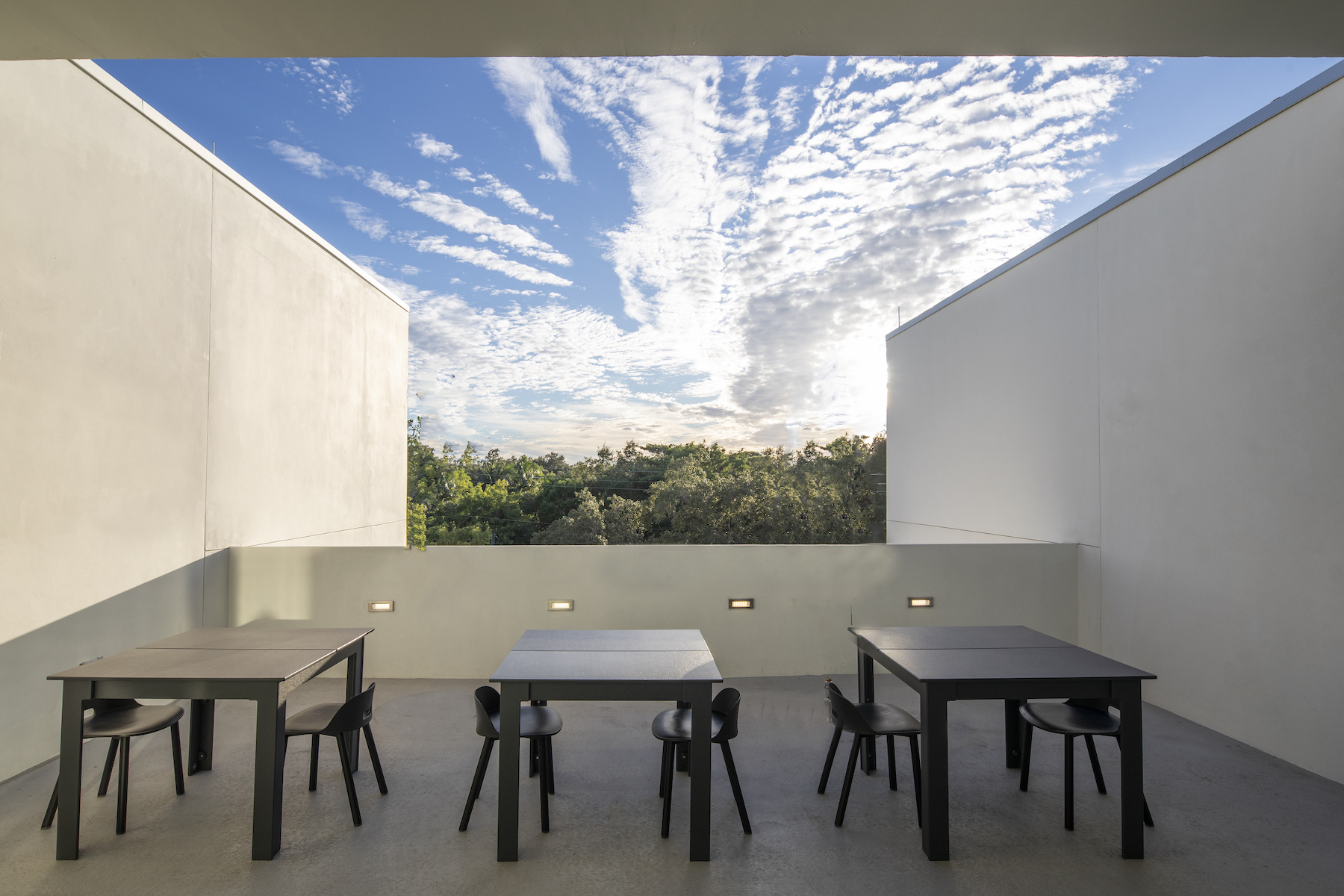 Another P&W project that dispensed with private faculty offices is the K-5 St. Stephens Episcopal Day School, also in Coconut Grove, which last October completed a 23,000-sf Arts and Innovation Center and a 3,700-sf Ministry Building, located at its entrance. This $9.4 million pavilion, constructed by Skanska, is an example of STEAM education in early childhood development that showcases principles of design flexibility and adaptability, team-based learning, and project-based outcomes.
Another P&W project that dispensed with private faculty offices is the K-5 St. Stephens Episcopal Day School, also in Coconut Grove, which last October completed a 23,000-sf Arts and Innovation Center and a 3,700-sf Ministry Building, located at its entrance. This $9.4 million pavilion, constructed by Skanska, is an example of STEAM education in early childhood development that showcases principles of design flexibility and adaptability, team-based learning, and project-based outcomes.
The design provides an array of informal learning spaces.
Related Stories
| Mar 12, 2014
14 new ideas for doors and door hardware
From a high-tech classroom lockdown system to an impact-resistant wide-stile door line, BD+C editors present a collection of door and door hardware innovations.
| Mar 4, 2014
If there’s no ‘STEM crisis,’ why build more STEM schools?
Before you get your shorts in a knot, I have nothing against science, technology, engineering, or even mathematics; to the contrary, I love all four “STEM” disciplines (I’m lying about the math). But I question whether we need to be building K-12 schools that overly emphasize or are totally devoted to STEM.
| Feb 26, 2014
Adaptive reuse project brings school into historic paper mill
The project features nontraditional classrooms for collaborative learning, an arts and music wing, and a technologically sophisticated global resource center.
| Feb 14, 2014
Crowdsourced Placemaking: How people will help shape architecture
The rise of mobile devices and social media, coupled with the use of advanced survey tools and interactive mapping apps, has created a powerful conduit through which Building Teams can capture real-time data on the public. For the first time, the masses can have a real say in how the built environment around them is formed—that is, if Building Teams are willing to listen.
| Feb 5, 2014
'School Security' PDF available to BD+C readers - CORRECTED
I've received several requests from BD+C readers who design and build K-12 schools about the 3-part series we ran in our January issue ("Can Design Prevent Another Sandy Hook?"). They wanted to send the issue to their school boards and other public officials with responsibility for school safety. In light of the importance of this topic, as a special service to our readers we're making the series available in PDF form.
| Feb 5, 2014
Extreme conversion: Atlanta turns high-rise office building into high school
Formerly occupied by IBM, the 11-story Lakeside building is the new home for North Atlanta High School.
| Jan 30, 2014
What to expect in the metal building industry in 2014
Every year brings changes. This one won’t be any different. We’ll see growth in some areas, declines in others. Here’s a little preview of what we’ll be writing about 2014 when 2015 comes rolling in.
| Jan 28, 2014
White Paper: How metal buildings deliver long-term value to schools
A new white paper from Star Building Systems outlines the benefits of metal buildings for public and private school building projects.
| Jan 28, 2014
16 awe-inspiring interior designs from around the world [slideshow]
The International Interior Design Association released the winners of its 4th Annual Global Excellence Awards. Here's a recap of the winning projects.
| Jan 15, 2014
Report: 32 U.S. buildings have been verified as net-zero energy performers
The New Buildings Institute's 2014 Getting to Zero Status report includes an interactive map detailing the net-zero energy buildings that have been verified by NBI.


